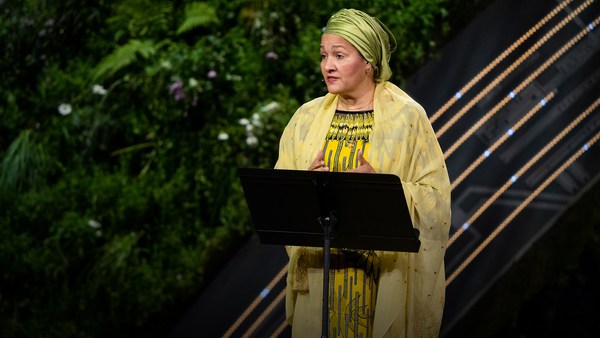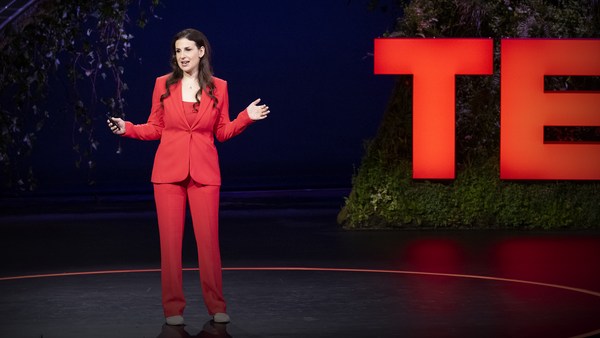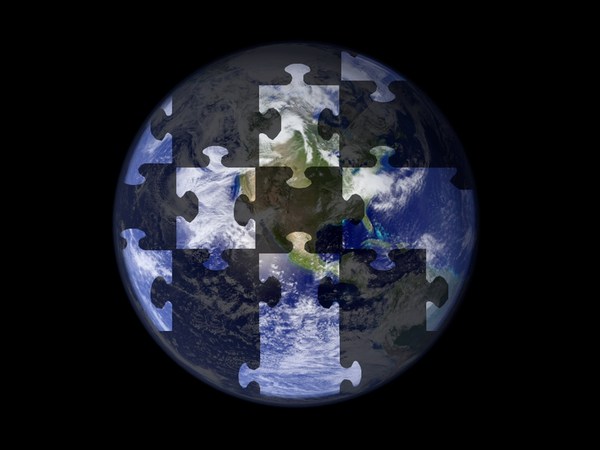The air we breathe has changed. The mix of gases is shifting, with more and more greenhouse gases like carbon dioxide. And this shift is happening faster each year. In fact, concentrations of CO2 have reached levels never before breathed by humans, since Homo sapiens evolved. In just a few hundred years, eons of fossilized sunshine have been burned as coal, oil and gas. The exhaust has transformed the entire atmosphere and ocean. It’s like a pollution blanket, and the result we know as climate change.
So how much more of that fossilized sunshine can we burn before further destabilizing the Earth’s systems? Not much. Think of it as a carbon budget. We are currently adding 55 billion metric tons of greenhouse gases to the atmosphere every year. This is the Gigaton Challenge. By some estimates, at that pace, we will have burned through the remaining budget by 2030. So to give us some room to breathe, the world must reduce greenhouse gas pollution by more than seven percent each year, every year of this decade ... starting now.
There are a number of ways to do that. Let’s start by looking at the greenhouse gases themselves. CO2 makes up nearly 75 percent of the pollution emitted each year. There’s also nitrous oxide, known as laughing gas, but it's no laughing matter, seeping out of farm fields and elsewhere and making up six percent of the problem. And then there’s methane, which you may also know of as natural gas. It’s 17 percent of the total. There are other greenhouse gases, but these three make up the bulk of the climate challenge. All must be reduced -- and fast.
Methane is better at trapping the Sun’s heat, which means cutting methane pollution is a necessary and fast-acting stimulus for our carbon budget. If methane emissions from agriculture and the oil and gas industry can be eliminated in this decade, we might be able to stave off catastrophes like the loss of the Arctic sea ice and glaciers all around the world.
CO2 has a longer life. Once it is added to the atmosphere, it can stay up there for hundreds of years, if not longer. CO2 emissions must be cut in half by 2030, and then reduced even further by 2040, to put the world on a path of adding no CO2 to the air by 2050. And that means transforming the modern world as quickly as possible.
There are several ways to break down the sources of greenhouse gas emissions. Here we’re using the public Climate Watch data. Start with energy. The majority of modern energy comes from fossil fuels, which makes the energy sector 76 percent of the climate challenge, including the fuels used for transportation, industrial processes and agricultural production. The shift to clean energy must be accelerated by an order of magnitude if we want any chance to restrain global warming to 1.5 degrees Celsius. And we’ll need more ways to store this clean electricity, whether that’s putting it in the chemical bonds of a battery or into a molecule of hydrogen. Batteries and clean hydrogen are also going to play a key role in cleaning up transportation, which accounts for 17 percent of climate-changing pollution, including the use of energy to move people and goods around: eight percent from cars; five percent from trucks and other heavy-duty vehicles; and four percent from shipping and aviation. With abundant clean electricity, the world can win the race to electrify cars and create cleaner alternative fuels for trucks, ships, and even one day, airplanes.
Then there are our lifestyles and the materials that make them possible. That’s everything from the cement and steel that go into buildings to the plastic fibers in fashion. All told, these materials account for six percent of our emissions -- on top of the energy emissions required to produce them. And we’ll need new and clean ways to make them or replace them.
Farming and animal raising also have to change as agriculture accounts for 12 percent of greenhouse gas pollution. That means everything from how and what people eat to how and what cows, chickens and pigs eat. It also means finding ways for farm fields to go from sources of greenhouse gas to places where greenhouse gases get buried. Agriculture is also the biggest direct impact people have on the plants, animals, microbes and fungi that share this planet with us. To truly solve the climate challenge, the wild world will have to be protected and restored to allow all of life’s myriad forms to flourish. A halt in cutting down forests, burning peatlands and converting coastal wetlands could prevent the release of nearly five billion metric tons of greenhouse gases each year. Restoring nearly 200 million hectares of degraded forestland, peatland and wetlands could also absorb almost another four billion metric tons. Perhaps even more importantly, the ocean has vast potential to help reduce greenhouse gases ... if we protect it.
Finally, there are technologies being developed to draw down CO2 from the atmosphere because we have already emitted too much. But very few of these machine forests have been deployed and they are too expensive to scale up faster right now.
This is the climate challenge we face: going from adding 55 billion metric tons of greenhouse gases to the air each year, to adding zero by 2050, at the latest. The countdown begins now.
(Music)
[Countdown]





